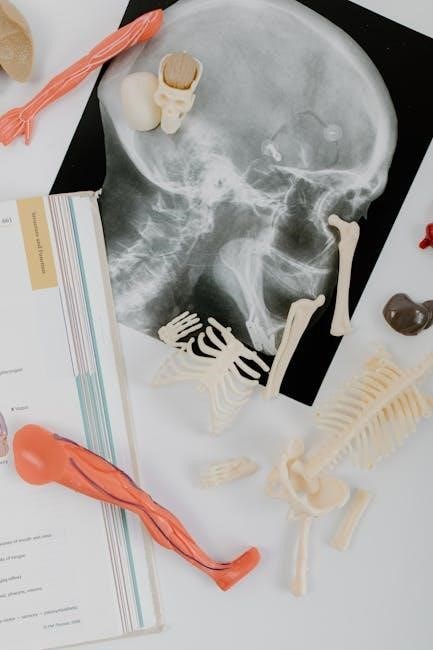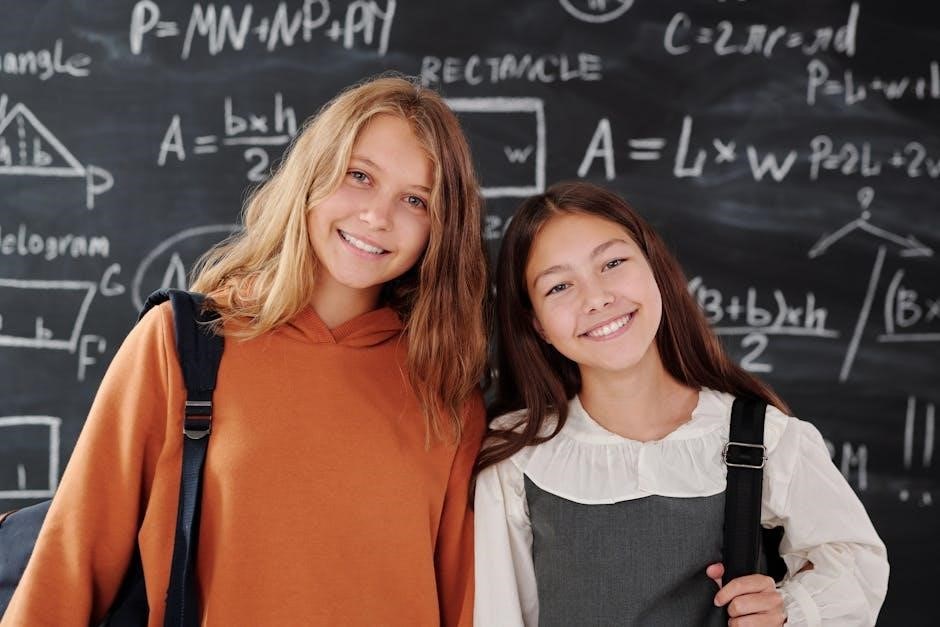
the science of successful learning pdf
The Science of Successful Learning: A Comprehensive Guide
This comprehensive guide explores the science of learning, drawing on cognitive research to offer educators evidence-based strategies. It delves into understanding how students learn, connecting theory with practical teaching implications. Examining the key cognitive principles and their implications for classroom practices is critical for educators.
The science of learning is an interdisciplinary field encompassing research from cognitive psychology, neuroscience, and education. It seeks to understand how people learn, retain information, and apply knowledge effectively. This understanding is crucial for educators aiming to optimize teaching methods and create effective learning environments. By applying the principles of the science of learning, educators can move beyond traditional approaches and adopt strategies grounded in empirical evidence.
This introduction highlights the importance of understanding cognitive principles and their impact on instructional design. It emphasizes the significance of evidence-based teaching practices and the role of mindful learning. The science of learning provides a framework for educators to enhance long-term retention, improve discrimination, and foster deeper understanding in students. Ultimately, the goal is to create a more effective and engaging learning experience.
Key Cognitive Principles in Learning
Cognitive principles are fundamental to understanding how students acquire and retain knowledge. These principles, derived from cognitive science, offer practical implications for educators, shaping effective classroom strategies and optimizing learning outcomes based on proven methods.
Prior Knowledge Activation
Prior knowledge activation is a cornerstone of effective learning, recognizing that students learn new ideas by referencing what they already know. Activating this prior knowledge helps students connect new information to existing cognitive frameworks, facilitating deeper understanding and retention. A well-sequenced curriculum plays a vital role in ensuring students possess the necessary prior knowledge to master new concepts effectively.
This activation can be achieved through various methods, such as brainstorming sessions, pre-reading activities, or brief reviews of related topics. By explicitly linking new material to students’ existing knowledge base, educators can create meaningful connections, promoting engagement and comprehension. Furthermore, acknowledging and addressing any misconceptions or gaps in prior knowledge is crucial for preventing future learning difficulties.
In essence, prior knowledge activation serves as a bridge between the known and the unknown, enabling students to build upon their existing understanding and construct a more robust and integrated knowledge base. When students link concepts, they will have a better chance of understanding the material.
The Importance of a Well-Sequenced Curriculum
A well-sequenced curriculum is paramount in facilitating effective learning, ensuring that students acquire the necessary foundational knowledge to build upon. This deliberate sequencing allows learners to progressively master new ideas, preventing cognitive overload and promoting deeper understanding. By carefully organizing topics and concepts, educators can create a structured learning experience that supports knowledge acquisition and retention.
A well-structured curriculum considers the prior knowledge students need before introducing new concepts. This way, the student can connect what they already know with the new material. Without it, students may struggle to grasp more complex ideas and may feel lost. It helps students build on prior knowledge.
Furthermore, a well-sequenced curriculum allows for the strategic use of spaced practice and interleaving, techniques proven to enhance long-term retention and improve discrimination between concepts. The order in which the topics are presented is just as important as the topics themselves, playing a crucial role in student success.

Multimedia Learning Principles
Multimedia learning principles guide the effective design of instructional materials using words and visuals. These principles aim to reduce cognitive load and enhance understanding. Principles such as contiguity, modality, and coherence play a crucial role.
Contiguity Effects in Multimedia Design
The contiguity effect, a core principle in multimedia learning, emphasizes the importance of presenting related information closely together in both space and time. When words and corresponding graphics are spatially contiguous, learners can more easily create mental connections between them, reducing extraneous cognitive load; This principle also applies temporally; presenting explanations simultaneously with animations, rather than sequentially, helps learners process the information more efficiently.
Effective multimedia design leverages contiguity by placing text labels directly near the elements they describe in a diagram. Avoiding separation minimizes the need for learners to mentally search and integrate the information. This spatial and temporal proximity streamlines cognitive processing, leading to improved understanding and retention.
By adhering to the contiguity effect, educators and instructional designers can create multimedia learning experiences that are more intuitive and effective, fostering deeper learning and knowledge construction. Ignoring this may overwhelm the student.

Effective Teaching Practices Based on Learning Science
Effective teaching practices, grounded in learning science, enhance long-term retention through spaced practice. They also improve discrimination and generalization with interleaving. Retrieval practice strengthens memory, while elaboration promotes deeper understanding of the subject matter for the students.
Spaced Practice: Enhancing Long-Term Retention
Spaced practice is a powerful learning technique supported by cognitive science, significantly enhancing long-term retention of learned material. Unlike cramming, where information is studied intensely in a short period, spaced practice involves reviewing material at increasing intervals. This approach capitalizes on the forgetting curve, forcing the brain to actively retrieve information, which strengthens memory pathways.
By revisiting concepts over time, learners solidify their understanding and improve their ability to recall information when needed. The key lies in the spacing effect, where optimal intervals between reviews depend on the individual and the complexity of the material. Implementing spaced practice can involve scheduling regular review sessions, using flashcards with increasing intervals, or incorporating retrieval practice activities.
Teachers can integrate spaced practice into their teaching by revisiting previous topics throughout the course. This ensures students continually engage with core concepts, building a robust and lasting understanding. Over time, this helps to ensure that the knowledge is retained.
Interleaving: Improving Discrimination and Generalization
Interleaving is a learning technique that involves mixing different but related topics or skills during study sessions. Instead of blocking practice, where one topic is studied exclusively before moving on to the next, interleaving promotes discrimination and generalization. This approach forces learners to actively differentiate between concepts, enhancing their ability to apply knowledge in varied contexts.
By switching between topics, the brain is challenged to identify the underlying principles and features that distinguish them. This active discrimination process strengthens memory and facilitates the transfer of learning to new situations. Interleaving can be implemented by mixing problem types during practice, varying the order of topics studied, or presenting related concepts in an integrated manner.
Teachers can incorporate interleaving into their instruction by alternating between different topics during lessons or assignments. This encourages students to think critically and make connections between related concepts, building a more flexible and adaptive understanding. This approach helps to improve learning and retention in the long run, by ensuring that the knowledge is retained.
Retrieval Practice: Strengthening Memory
Retrieval practice is a powerful learning strategy that involves actively recalling information from memory, instead of passively rereading or restudying material. This active recall process strengthens the neural pathways associated with the retrieved information, making it easier to access in the future. Retrieval practice can take many forms, including self-testing, flashcards, quizzes, and even simply writing down everything one can remember about a topic.
The key to effective retrieval practice is to make the recall effortful, meaning that the learner has to actively search their memory for the information. This effortful retrieval strengthens memory connections and improves long-term retention. Spaced retrieval, where retrieval attempts are spaced out over time, further enhances the benefits of this technique.
Teachers can incorporate retrieval practice into their classrooms by regularly asking students to recall previously learned material. This can be done through low-stakes quizzes, brainstorming sessions, or even simple “think-pair-share” activities. By making retrieval practice a regular part of the learning process, educators can help their students build stronger, more durable memories. It improves knowledge retention.
Elaboration: Promoting Deeper Understanding
Elaboration is a cognitive strategy that involves connecting new information to existing knowledge, thereby promoting deeper understanding and retention. It’s about going beyond rote memorization and actively processing the information to create meaningful connections within the learner’s existing mental framework. This can involve summarizing information, explaining it in one’s own words, drawing diagrams, or generating examples.
The more connections a learner makes between new information and their prior knowledge, the more easily they will be able to retrieve that information later. Elaboration helps to create a rich and interconnected network of knowledge, making it easier to access and apply the information in different contexts. Techniques like concept mapping and teaching others are excellent ways to encourage elaboration.
In the classroom, teachers can promote elaboration by asking students to explain concepts to each other, relate new material to their own experiences, or create analogies and metaphors. Encouraging students to ask “why” and “how” questions, and to seek out deeper meaning, can also foster elaboration. By making elaboration a regular part of the learning process, educators can help their students develop a more profound and lasting understanding of the subject matter.

The Role of Mindful Learning in Higher Education
Mindful learning in higher education emphasizes a student-centered approach, encouraging active engagement with learning materials and fostering a deeper understanding of concepts. It promotes critical thinking, reflection, and self-awareness, enabling students to take ownership of their learning journey. This approach moves beyond passively receiving information to actively constructing knowledge through intentional engagement.
Mindful learning encourages students to be fully present in the learning process, paying attention to their thoughts, feelings, and sensations without judgment. This heightened awareness allows students to identify their learning styles, strengths, and weaknesses, enabling them to tailor their learning strategies accordingly. Moreover, it cultivates a growth mindset, where students view challenges as opportunities for growth and learning.
By integrating mindful practices into higher education, institutions can empower students to become lifelong learners, equipped with the skills and attitudes necessary to navigate the complexities of the modern world. Mindful learning fosters not only academic success but also personal well-being and a sense of purpose, preparing students to contribute meaningfully to society. It is a powerful tool for cultivating engaged, thoughtful, and adaptable individuals.
Principles of Learning and Development for Educators
Educators must understand core principles. The brain is malleable across the lifespan, responding to experiences. Educators should connect these principles to practice, guiding effective teaching. This ensures educators can foster student learning and development effectively.
Malleability of the Brain and Development Across the Lifespan
The science of learning emphasizes that the brain’s structure and function are not fixed but are continuously shaped by experiences throughout life. This malleability, also known as neuroplasticity, has profound implications for educators. It suggests that learning and development are not limited to childhood but continue across the lifespan. This principle emphasizes the importance of providing ongoing learning opportunities and support for students of all ages.
Understanding neuroplasticity allows educators to create learning environments that actively promote brain development. By providing rich, stimulating experiences, teachers can help students strengthen existing neural connections and form new ones. Furthermore, recognizing that the brain can adapt and change throughout life encourages a growth mindset, where students believe their abilities can be developed through dedication and hard work. This mindset is crucial for fostering resilience and a lifelong love of learning.
This adaptability highlights the potential for continuous growth and improvement, emphasizing the need for ongoing learning opportunities.

Applying the Science of Learning in School Design
Applying the science of learning in school design means creating environments that actively support and enhance how students learn. This involves considering various factors, including the physical layout of classrooms, the integration of technology, and the overall school culture. Effective school design should prioritize creating spaces that foster collaboration, exploration, and personalized learning experiences.
Furthermore, school design should incorporate principles of cognitive science, such as providing opportunities for spaced practice, retrieval practice, and interleaving. Classrooms can be designed to facilitate these strategies, for example, by including flexible seating arrangements that encourage movement and interaction. Technology can also play a crucial role in supporting personalized learning, allowing students to access resources and complete assignments at their own pace.
Ultimately, the goal of applying the science of learning in school design is to create environments where all students can thrive. This requires a holistic approach that considers the physical, cognitive, and social-emotional needs of learners.